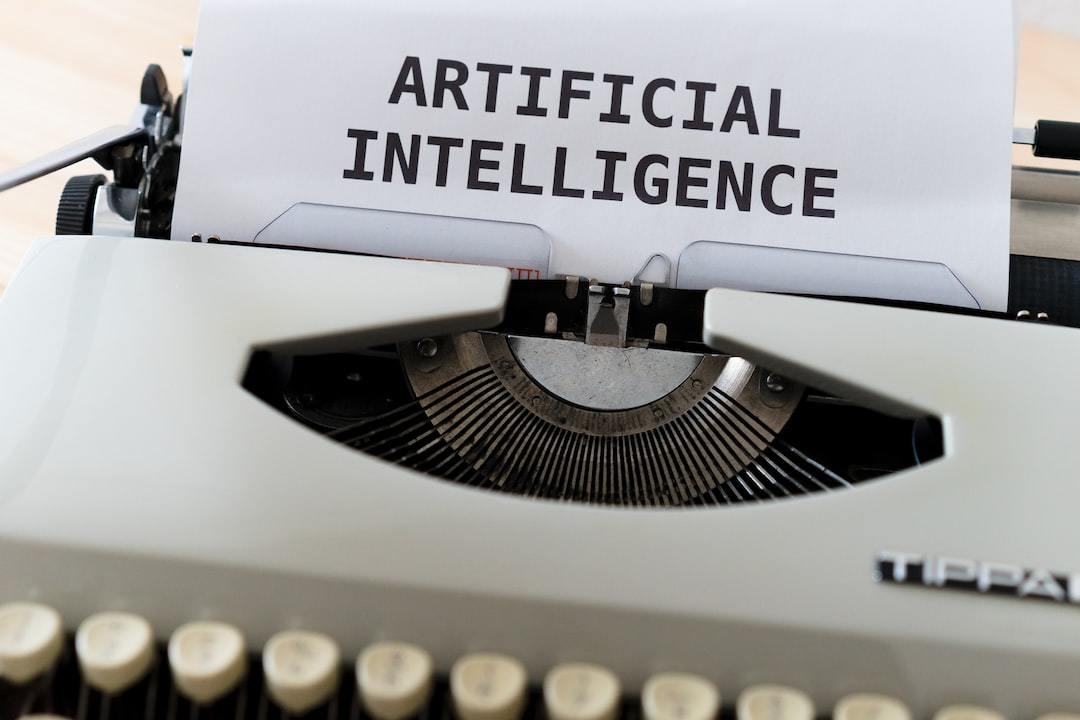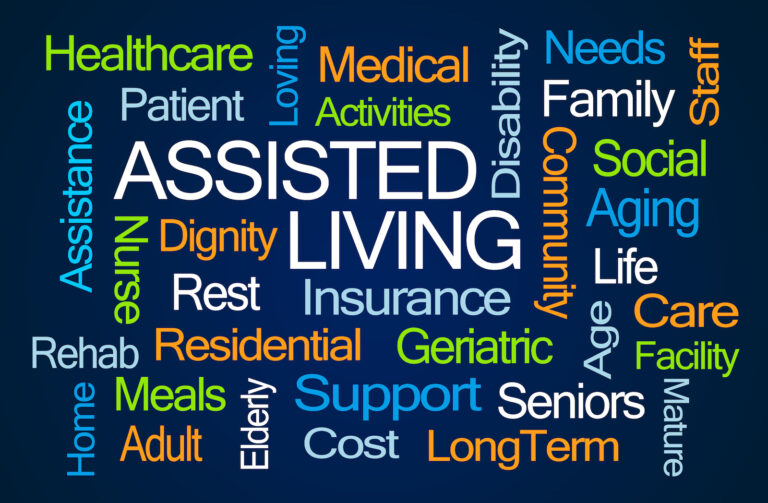Using AI for assisted living is revolutionizing the way we approach elder care, providing innovative solutions to improve quality of life and operational efficiency. As our global population ages, the demand for effective senior care services continues to grow. AI provides a range of potentials to upgrade these services through employing machine learning algorithms which mimic human cognitive abilities.
In this blog post, we will explore various applications of artificial intelligence in assisted living facilities, such as AI-based fall detection systems that can help prevent accidents and injuries among older adults. We’ll also discuss social robots designed specifically for companionship and support, which have been shown to provide numerous benefits in senior care settings.
Furthermore, we’ll delve into how natural language processing (NLP) can streamline staffing processes within assisted living facilities while predictive analytics play an increasingly important role in optimizing health outcomes. Additionally, you’ll learn about cutting-edge robotic exoskeletons that offer physical assistance to seniors with mobility challenges and innovative health monitoring tools using AI technology.
Last but not least, we will address some common challenges and misconceptions associated with implementing artificial intelligence technologies in assisted living environments. By understanding both the potential advantages and ethical considerations involved when using AI for assisted living purposes, industry professionals can make informed decisions on how best to incorporate these transformative innovations into their organizations.
Table of Contents:
- AI-Based Fall Detection Systems
- Preventing Resident Falls with AI Technology
- Social Robots for Companionship and Assistance
- Operational Efficiency through Natural Language Processing & Predictive Analytics
- Robotic Exoskeletons Designed For Seniors
- AI-Integrated Health Monitoring Tools
- Addressing Challenges in AI Integration within Senior Living Communities
- FAQs in Relation to Using Ai for Assisted Living
- Conclusion
AI-Based Fall Detection Systems
AI is improving the lives, healthiness, safety and autonomy of elderly people. People Power Family is an AI-based system that uses motion sensors, cameras, and lidar technology for fall detection. This system monitors seniors’ activities at home or within assisted living communities to ensure their well-being while providing peace of mind for family members.
Motion Sensors and Cameras in Monitoring Daily Activities
Motion sensors track movement patterns over time. When combined with camera monitoring systems like those used in assisted living facilities, these technologies provide valuable insights into the daily routines of older adults. They can detect if someone has been inactive for too long or identify unusual behavior that may indicate a potential problem.
Lidar Technology’s Role in Detecting Falls
Lidar technology uses laser light pulses to measure distances between objects accurately. In the context of elder care and fall prevention solutions like People Power Family’s AI-based system, this advanced technology allows caregivers or family members to receive real-time alerts when falls occur so they can respond quickly with appropriate interventions.
By incorporating AI into elder care services, we improve overall safety and empower seniors to maintain greater autonomy as they age. Leveraging cutting-edge tools such as motion sensors, cameras, and lidar technology within assisted living facilities or private homes alike, we take significant strides towards ensuring better health outcomes for our aging population.
Preventing Resident Falls with AI Technology
Assisted living facilities are now using artificial intelligence (AI) to prevent falls among older adults. Companies like SafelyYou are leading the way in this innovative approach to senior care.
Early Detection Methods Used by SafelyYou
SafelyYou uses AI-powered cameras to monitor residents’ movements and identify potential fall risks. The system analyzes video footage in real-time, detecting unusual patterns or behaviors that may indicate an increased risk of falling. When such patterns are identified, the system sends alerts to caregivers who can then intervene before a fall occurs.
The Impact on Seniors’ Autonomy
- Maintaining independence: With the help of AI technology, seniors can continue living independently while still receiving essential support from caregivers when needed.
- Promoting self-care: Early detection allows older adults to address any underlying issues contributing to their risk of falling and make necessary adjustments for improved safety.
- Informed decision-making: Accessible data provided by AI systems enables seniors and their families to make informed decisions about appropriate levels of care based on individual needs.
Assisted living facilities can leverage AI to upgrade the quality of life for seniors and diminish the weight on healthcare providers and relatives in charge of their welfare. As technology continues to advance, it is crucial that facilities embrace innovative solutions like those offered by SafelyYou to provide optimal care for aging populations.
Social Robots for Companionship and Assistance
As the population of older adults continues to grow, social robots equipped with artificial intelligence are being developed to offer companionship and entertainment while performing tasks or ensuring safety measures are followed. These robotic solutions may be particularly helpful for those who live alone or have disabilities requiring additional support from Personal Emergency Response Systems (PERS).
Tasks Performed by Social Robots
- Elder care: Assisting seniors with medication reminders, meal preparation, and housekeeping.
- Mobility assistance: Helping older adults move around safely with physical support or guidance.
- Cognitive stimulation: Engaging seniors in mentally stimulating activities like puzzles, games, and conversations to keep their minds sharp.
- Safety monitoring: Using motion sensors and cameras to detect falls or other emergencies and alerting caregivers when needed.
- Social interaction: Providing emotional support through conversation and companionship to reduce feelings of loneliness and isolation among elderly individuals.
Benefits for Seniors Living Alone or with Disabilities
AI-powered robots can significantly improve the quality of life for seniors living independently or with disabilities, providing practical help, cognitive stimulation, monitoring safety and offering emotional support. By offering practical assistance, cognitive stimulation, safety monitoring, and social interaction, these innovative devices help promote independence while reducing the burden on family members or caregivers. For example, robotic pets like PARO, an interactive seal designed specifically for elder care, have been shown to reduce stress and anxiety while increasing social interaction among older adults.
Moreover, the integration of AI technology within these robots allows them to learn from their interactions with seniors and adapt their behavior accordingly. This personalized approach ensures that each individual receives the appropriate level of support based on their unique needs and preferences.
Operational Efficiency through Natural Language Processing & Predictive Analytics
Assisted living facilities are getting smarter with the help of artificial intelligence (AI) to improve their operational efficiency. They’re using natural language processing (NLP) and predictive analytics techniques in conjunction with machine learning processes to match staff members to specific roles based on skill sets needed most urgently at any given time frame. This results in better allocation of resources and improved overall facility operations.
Matching Staff Members Based on Skill Sets
- Data-driven decision-making: By analyzing historical data, AI algorithms can identify patterns that suggest which staff members would be best suited for particular tasks or shifts. This enables management teams to make more informed decisions when assigning responsibilities.
- Faster response times: Using predictive analytics, assisted living facilities can anticipate potential issues before they arise and ensure that appropriate personnel are available to address them promptly.
- Better patient care: Matching caregivers with residents based on their skills and expertise leads to a higher quality of elder care as well as increased satisfaction among older adults receiving assistance from these professionals.
Improved Facility Operations
The integration of AI-powered tools like NLP and predictive analytics not only helps streamline staffing but also contributes significantly towards optimizing other aspects of an assisted living facility’s operations. For example:
- Maintenance schedules can be predicted more accurately, reducing downtime due to equipment failures or repairs.
- Safety measures such as fall detection systems can be enhanced through machine learning algorithms that continuously learn from collected data and improve their accuracy over time. (source)
- Budgeting and financial planning become more efficient as AI tools analyze historical spending patterns, enabling administrators to make better-informed decisions about resource allocation.
As the senior care industry continues to evolve, assisted living facilities must embrace innovative technologies like artificial intelligence in order to remain competitive. By harnessing the power of NLP, predictive analytics, and machine learning processes, these organizations can optimize their operations while providing high-quality care for older adults.
Assisted living facilities are using AI to improve operational efficiency through natural language processing and predictive analytics. By matching staff members based on skill sets, making data-driven decisions, anticipating potential issues before they arise, and optimizing other aspects of facility operations such as maintenance schedules and safety measures with machine learning algorithms that continuously learn from collected data. This allows for better patient care while remaining competitive in the senior care industry.
Robotic Exoskeletons Designed For Seniors
As the elderly population expands, novel approaches are being developed to help older individuals remain self-sufficient and enhance their wellbeing. One such advancement is the creation of robotic exoskeletons, specifically designed for seniors. Panasonic has taken a leading role in this field by developing an exoskeleton that assists with daily tasks while reducing physical strain.
Assisting with Daily Tasks
The robotic exoskeleton works by providing support and assistance during routine activities, such as standing up or lifting objects. It does so through a combination of sensors and motors that mimic human muscle movements. This allows seniors to perform tasks more easily, without overexerting themselves or risking injury.
Reducing Physical Strain and Increasing Comfort
- Reduced fatigue: The exoskeleton helps minimize muscle fatigue experienced by older adults during daily activities.
- Injury prevention: The added support provided by the device can help prevent injuries caused by falls or improper lifting techniques.
- Maintaining independence: Seniors using these devices may be able to maintain their independence longer than they would otherwise be able to do so without assistance.
- Promoting exercise: As individuals feel more comfortable engaging in physical activity, they may be encouraged to participate in regular exercise, which is essential for overall health and well-being.
As technology continues to advance, the integration of machine learning and motion sensors into elder care holds great promise in enhancing the lives of older adults. By addressing physical limitations through innovative solutions like robotic exoskeletons, seniors can maintain their independence while enjoying a higher quality of life. Learn more about Panasonic’s robotic technology and how it’s changing the future of senior care.
AI-Integrated Health Monitoring Tools
As the need for comprehensive elder care grows, technology companies are developing innovative tools that utilize artificial intelligence alongside other cutting-edge features. These AI-integrated health monitoring tools provide valuable support to older adults, enabling them to maintain their independence longer than might otherwise be possible.
Real-time health monitoring through AI
- Motion sensors: Devices equipped with motion sensors can track seniors’ movements and detect any unusual patterns or changes in activity levels. This information can help caregivers identify potential health issues early on and take appropriate action.
- Camera monitors: By incorporating cameras into assisted living facilities, staff members can remotely monitor residents’ well-being while respecting their privacy. Advanced algorithms analyze video feeds to identify signs of distress or emergencies requiring immediate attention.
Example: Healthy.io’s smartphone-based analysis
A notable example of an AI-driven health monitoring tool is Healthy.io, a device that analyzes urine samples for bacteria, viruses, proteins, and hormones by attaching it to a smartphone. The system uses machine learning algorithms to evaluate test results quickly and accurately while providing actionable insights for users or healthcare professionals overseeing their care.
These assisted living facilities are not only improving senior care but also reducing strain on health care systems by identifying problems before they escalate into more serious conditions requiring hospitalization or long-term care. As AI continues to advance, we can expect even more sophisticated health monitoring tools that cater specifically to the needs of older adults.
Addressing Challenges in AI Integration within Senior Living Communities
Despite promising advancements in AI technology within senior living communities, challenges remain. Developers must consider potential biases in data collection processes and ethical concerns related to privacy invasion or benevolent coercion by social workers and family members encouraging elderly individuals to adopt new technologies against their will.
Potential Biases in Data Collection
Data collection is crucial for implementing AI effectively. However, biased data can lead to skewed results and negatively impact older adults’ care. For instance, if an AI system’s training data predominantly includes information about one demographic group, it may not perform tasks accurately for other groups. Developers must ensure diverse representation during data collection while considering factors like age, gender, ethnicity, and health conditions.
Ethical Concerns Regarding Privacy Invasion
The integration of AI into assisted living facilities raises valid concerns about privacy invasion for seniors who value their independence and autonomy. The use of motion sensors or cameras might make some residents feel uncomfortable or closely monitored without consent. Facility operators must strike a balance between utilizing advanced technology for safety purposes while respecting individual preferences and ensuring informed consent from residents before deploying these tools.
Benevolent Coercion: Striking the Right Balance
- Educate: Inform older adults about the benefits of using AI-based systems such as improved safety measures or enhanced quality of life through companionship robots.
- Incorporate feedback: Listen to seniors’ opinions on adopting new technologies and address their concerns by involving them in the decision-making process.
- Respect autonomy: Ensure that seniors have the right to choose whether or not they want to use AI technologies and avoid pressuring them into adopting these tools against their will.
Addressing potential biases in data collection processes and ethical concerns related to privacy invasion is essential for successfully integrating AI within senior living communities. By striking a balance between technological advancements and respecting individual preferences, assisted living facilities can harness the power of artificial intelligence while maintaining trust with older adults.
Developers integrating AI into senior living communities must address potential biases in data collection and ethical concerns related to privacy invasion. Facility operators should strike a balance between utilizing advanced technology for safety purposes while respecting individual preferences and ensuring informed consent from residents before deploying these tools. By educating, incorporating feedback, and respecting autonomy, assisted living facilities can harness the power of artificial intelligence while maintaining trust with older adults.
FAQs in Relation to Using Ai for Assisted Living
How AI Can Help the Elderly
AI can improve the lives of seniors with fall detection systems like People Power Family, social robots for companionship, and health monitoring tools.
AI in Nursing Homes
Nursing homes use AI for operational efficiency with natural language processing, predictive analytics, and robotic exoskeletons like Panasonic’s device for physical assistance.
AI’s Role in Healthcare
AI aids healthcare with early diagnosis through innovative solutions like Healthy.io’s smartphone-based urine analysis system, personalized treatment plans, and streamlined administrative processes using NLP techniques.
AI in Long-Term Care
Long-term care settings use AI for efficient scheduling and resource allocation, continuous monitoring of vital signs, and preventive measures against falls with services like SafelyYou.
Conclusion
Revolutionize senior care with AI-assisted living solutions that enhance safety, comfort, and quality of life for seniors, including fall detection systems, social robots, and health monitoring tools.
But, it’s crucial to address ethical considerations and misconceptions surrounding AI technologies in senior care to ensure their successful implementation.
As technology advances, we can expect even more exciting developments in assistive robotics and predictive analytics applications for seniors.






